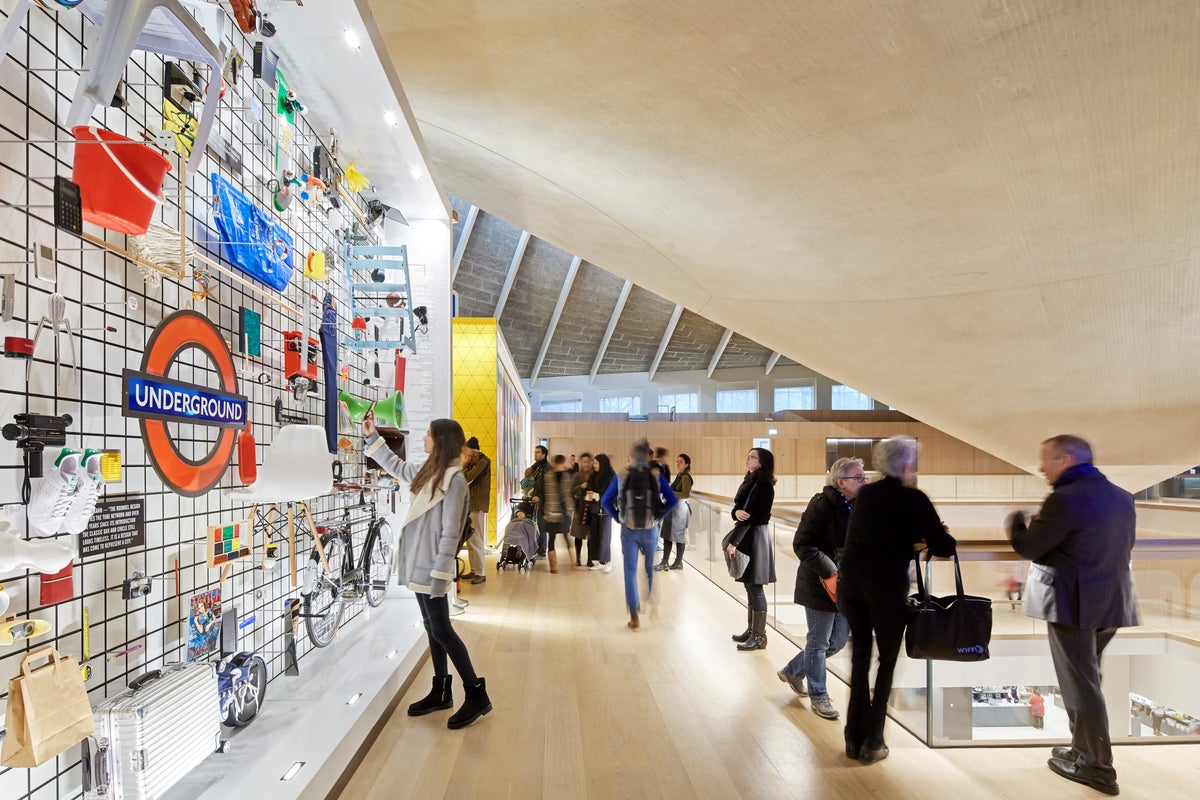Visualization Meditation: Types, Techniques and Tips
What do you see when you meditate? Perhaps your answer is a resounding “nothing!”–and this is perfectly okay. However, even though a state of meditation is often cultivated through the withdrawal of the senses, there are many practices that...

What do you see when you meditate? Perhaps your answer is a resounding “nothing!”–and this is perfectly okay. However, even though a state of meditation is often cultivated through the withdrawal of the senses, there are many practices that utilize mental imagery or your inner senses as the object or focus of your concentration. By practicing visualization, we can use our sense of inner-sight and imagination to help us go deeper into our meditation practice, connecting with both our subconscious and our daily lives. If you’re interested in trying out different forms of meditation and mindfulness, here are seven simple techniques to get you started!
What is visualization meditation?
Visualization is a style of meditation where the practitioner focuses their attention on a positive image, thought, feeling, or sensation. In this type of meditation, the practitioner will visualize an image or concept in their mind’s eye, and remain focused on this image during the practice. Visualization can be more engaging than regular meditation because you use your imagination to actively create images and scenes in your mind.
Some people find visualization meditation is sufficient when practiced alone, but some use it with additional practices, such as pranayama or mantra meditation, to further enhance concentration, create a feeling of deep relaxation, and prevent the mind from wandering into thoughts.
Why is visualization so powerful?
Visualization is a technique that helps us see our inner world in a different way. When we visualize, we create images in our minds that help us understand ourselves and others better. We can also use visualization to change our thoughts, feelings, emotions, and behaviors. For example, if you’re feeling anxious about something, you might imagine yourself in a safe place, surrounded by friends and family. Or if you’re feeling sad, you might imagine yourself surrounded and infused with a bright happy pink color.
Visualization meditation makes our thoughts and emotions more tangible by associating them with physical forms. It helps us see what we want to change or manifest in our lives and gives us the tools for transformation. Visualization meditation also helps us connect to our inner wisdom, which is always available to guide us toward our highest potential.
How does the practice of visualization meditation work?
When we think about something, we build a mental picture of it. The pictures we create in our heads are based on our past experiences, memories, and expectations. When we think about something we have never experienced before, we simply don’t have all the information available to create a clear picture of what it looks like. Our brains fill in the gaps with imagination, creating a mental model of what the object might look like.
Research using brain imaging suggests that visualization works because whenever we visualize something, our brains interpret the imagery in a similar way to how they would process an actual experience. When we see ourselves doing something, our brains create a neural pathway that helps us prepare our bodies to act in a way that matches what we saw in our mind’s eye. So whatever we train our minds to believe becomes our reality, and the more we do it, the more our real lives start to change and emulate what we imagined.
7 types of visualization meditation practices
There are seven main visualization meditation techniques.They can broadly be categorized into two main types. Techniques that focus on visualizing something tangible outside of the body and those that encourage us to see from the mind’s eye within. To find a visualization practice that works for you, consider one or more of the following types of meditations.
1. Yantra or Mandala
A yantra is a diagram made of geometric patterns that, I’ve explained to students, is kind of like a mantra for the eyes (In fact, most yantras are related to a mantra and deity). Commonly used in tantric practices, contemplating a yantra can be a powerful tool for focusing awareness. However, even without a specific meaning attached, any mandala can serve as an object of meditation. By visualizing symmetrical and repetitive patterns, either with our eyes open or internally, we form new pathways in the brain and stimulate a sense of balance, clarity, and relaxation.
2. Guru or Deity
Many spiritual traditions focus on visualizing either a spiritual teacher or a deity and calling upon its qualities. Keep in mind that in both Hinduism and Buddhism, gods and goddesses represent different virtues of the divine and of ourselves. By visualizing deities, we focus on embodying these qualities in our own lives, so before beginning, find a deity that you can relate to and whose traits you wish to embrace in your life.
3. Anything else that has meaning to you
If the objects above don’t resonate with your interest, experiment with visualizing a candle flame, thee imagine of a flower, the sun or moon, your favorite place, or the eyes or face of a loved one. Anything that brings you a feeling of tranquility or ease can help you to come into a place of higher self-awareness and is a suitable symbol for visualization.
4. Chakra or Energy
A common internal visualization exercise is to focus on light or energy within your body. One way to practice this is by focusing on either a specific chakra (third eye, heart, etc.) or on all of the chakras sequentially as a spectrum of light and colors. If you’re unable to see colors, you can simply imagine these energy centers as lights, flames, symbolic lotus flowers, or high-density places of spinning energy.
5. Guided journey creative visualizations
Typically scripted, journey-style visualization can be beneficial to those who have trouble keeping the mind focused or for those who are looking for insight into daily life. These meditations usually include a relaxation exercise followed by a walk through nature, suggested encounters of some sort, and symbolic objects or obstacles that you might find throughout your way. These practices are usually created with the intention of connecting you with different aspects of your subconscious mind.
It can also be empowering to lead yourself through a journey of your choice, especially through a difficult situation in life, in order to see yourself choosing behaviors and actions that are beneficial to you. Various theories suggest the idea that our thoughts control our realities, so visualizing real-life scenarios can serve as a powerful exercise in overcoming challenges and creating the behaviors that you want to actualize.
6. Color breathing
Take a few moments to decide on a feeling or quality that you want to bring into your life. Next, assign a color that best relates to this feeling or quality. For example, if you want to feel happy, you might choose a soothing blue or energizing orange. If you want to feel calm, you might choose green. When you’re ready, close your eyes and breathe slowly and deeply. Think about the color you’ve selected and visualize it in your mind. As you breathe in, feel the color wash over your face, arms, chest, legs, feet, hands, and fingers. Breathe in the color and feel it completely filling up your body. You can exhale and stay focused on the color or you can feel you are breathing out any negative feelings.
7. Loving-kindness meditation
Loving-kindness is a Buddhist meditation that helps you build compassion, empathy, forgiveness, and acceptance for yourself and others. This visual meditation practice involves feeling and imagining yourself sending kindness to important people in your life.
You begin by imagining someone you care about deeply. As you feel their presence, you repeat a comforting phrase like “may you be happy, may you be safe. May you be healthy, peaceful, and strong.” as you repeat these words over and over again, feel your gratitude for their presence in your life. Stay with that feeling, repeating the comforting words.
Benefits of visualization meditation
Visualization meditation is a type of meditation that helps us gain insight into our inner world. It is used to develop compassion, empathy, love, and wisdom. It is a tool to help us understand ourselves better and learn how to relate to others. It is a method of developing positive qualities such as patience, kindness, forgiveness, and tolerance.
Different types of visualization exercises offer different benefits. However, for those with wandering minds, any kind of visualization practice can offer a specific attention-grabbing focal point, along with guidance, either vague or detailed, depending on your needs.
We can use visualization exercises to help relax our bodies and minds, to get in touch with our own energy, or to connect with something greater than ourselves. Visualization also helps us to develop both creativity and concentration as we train our mind’s eye to work in new ways in order to form detailed images.
Athletes commonly use a form of visualization meditation to boost their health and althetic performance. It is a very effective technique for dealing with stress, anxiety, depression, insomnia, and many other conditions. It has been proven to reduce blood pressure, improve sleep quality, and increase feelings of wellbeing.
Visualization is also commonly used as part of reaching a state of yoga nidra, or yogic sleep, in the form of image recollection and release. By getting to know and utilizing the space behind our forehead, known as Chidakasha (which translates to “the space of consciousness”), we become attuned to different facets of our own awareness.
Finally, the visualization process can be taken over to life outside of meditation as well. In essence, we can use visualization to facilitate healing, to overcome obstacles, to promote positive feelings, and to envision leading our lives in the way that feels best.
Visualization tips
While many of us are inclined to easily visualize objects, ideas, or energy, for many of us (myself included), visualization does not come naturally. If you fall into this latter category of people, worry not! Visualization, like all meditation practices and techniques, is something that can be learned through repetition, keeping a few tips in mind:
If you’re using an object of focus, become familiar with this image beforehand. Keep the image or object in a place where you see it often, and look at it throughout the day to memorize its details. With a physical object of meditation, it can also help to begin your meditation practice with open eyes and, if the image fades from your mind quickly, to take a quick glance at your object from time to time. If it’s still hard to “see,” use your imagination and senses to continue to practice. Find a comfortable position where you can remain both alert and relaxed in a place that feels nourishing to you. Maintain a slow, deep breath throughout the entire process. When you find yourself drifting off, gently return your focus back to the mental image. Start small and build slowly. If you’ve never meditated before, try starting with just five minutes per session. Once you feel comfortable with that length of time, increase your duration to 15 minutes, or however long you’d like to go. Set aside time each day to dedicate yourself to establishing a regular meditation practice.Is visualization something that you’ve found helpful for focusing your mind or seeing different facets of yourself? Let us know if you have a favorite visualization technique from the list above. Please share your eye-opening experiences with our community!

 Hollif
Hollif 































